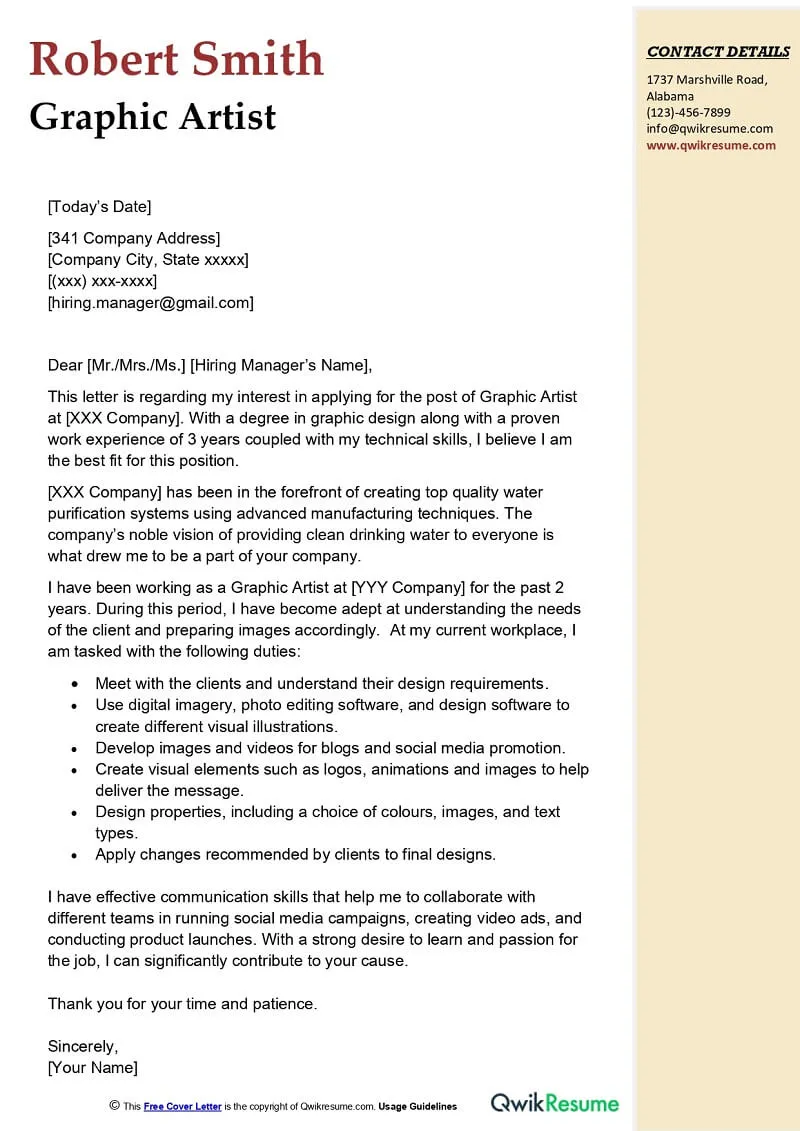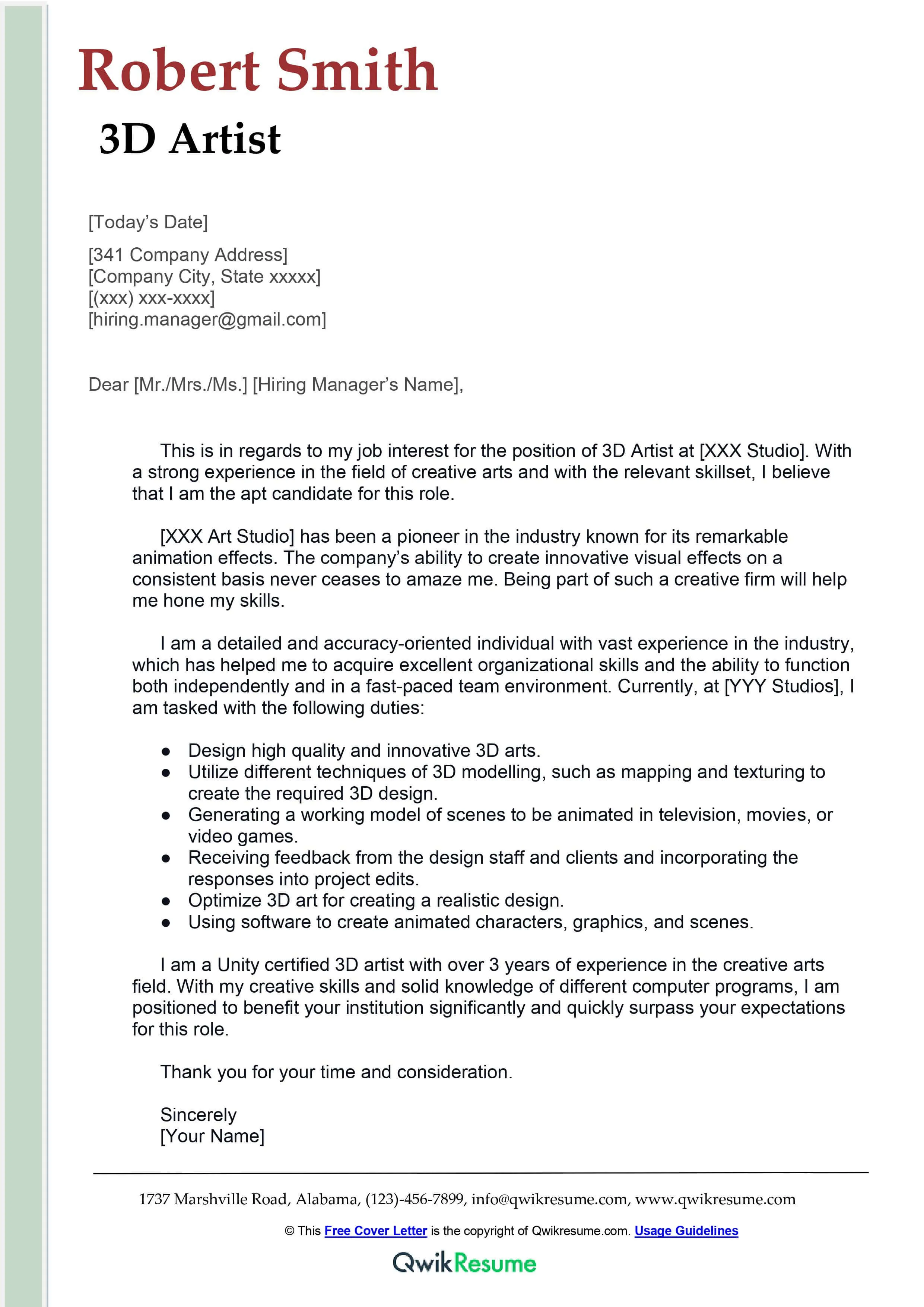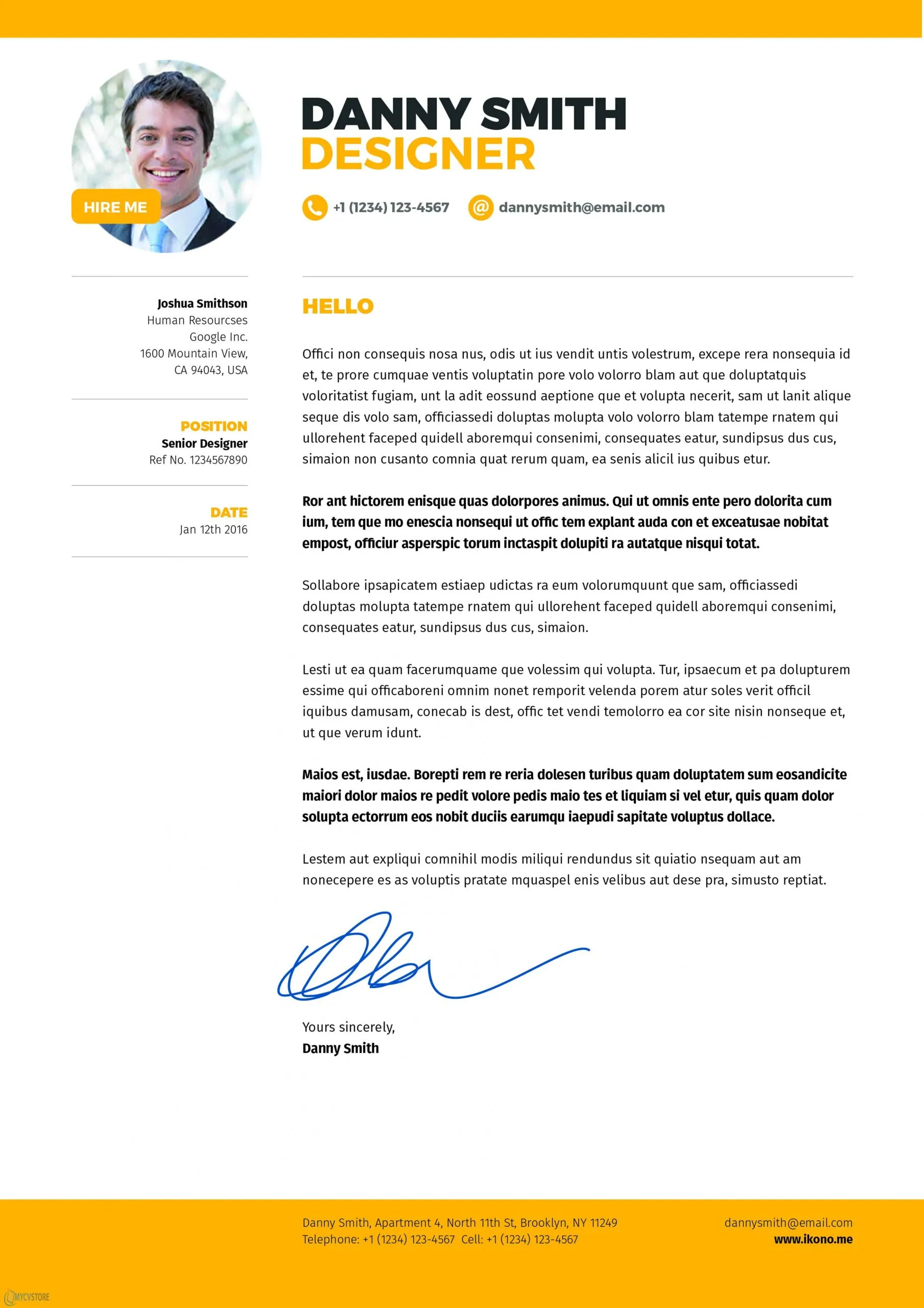Why a Cover Letter is Crucial for Graphic Designers
In the competitive world of freelance graphic design, your portfolio is your primary selling point, but a well-crafted cover letter is the secret weapon that can set you apart. A cover letter serves as your first impression, offering a chance to go beyond showcasing your design abilities and delve into your personality, work ethic, and understanding of the client’s needs. Think of it as a tailored introduction, providing context to your portfolio and demonstrating your genuine interest in the project. This is your opportunity to connect with potential clients on a more personal level and establish yourself as a professional who cares about the details. The cover letter is where you show you’re not just another designer, but the right designer for the job.
Highlighting Your Unique Skills and Experience
Your cover letter is the perfect space to highlight your unique skill set and experience that align with the specific job requirements. Begin by identifying the key skills mentioned in the project brief or job posting. These could include expertise in branding, web design, illustration, or specific software like Adobe Photoshop or Illustrator. Then, draw connections between your past experiences and the client’s needs. For example, if the client needs a logo design and you have a history of successful logo projects, make that your focal point. Quantify your achievements whenever possible. Instead of saying you ‘improved brand recognition,’ you could state you ‘increased brand engagement by 30% through social media graphics.’ This shows measurable impact and strengthens your claims, providing concrete proof of your capabilities. Be sure to focus on results, not just tasks. Highlight the impact of your work on past clients, demonstrating your value proposition.
Your Design Philosophy

Include a brief overview of your design philosophy. This is where you can express your approach to design, your core values, and what drives your creative process. This gives potential clients insight into your style, your process, and how you approach solving design challenges. Whether you emphasize collaboration, innovation, or user-centered design, clarifying your design philosophy can make your cover letter even more unique and make you stand out from the crowd. Use this section to align your values with the prospective client, demonstrating how you fit the culture of their project. If you value clean, minimalist designs, and the client is looking for a similar aesthetic, make sure to emphasize that. By doing so, you are showing how your design values directly translate into the successful completion of the job.
Showcasing Your Best Work
Your cover letter should serve as a teaser for your portfolio. Instead of just mentioning your work, highlight specific projects that best demonstrate your capabilities and relevance to the client’s needs. Choose examples that directly correlate to the project requirements. If the client needs a website redesign, spotlight your best web design projects. Briefly describe the project, the challenges you faced, and the solutions you provided. Mention the results achieved, such as increased user engagement or a rise in conversion rates. This gives potential clients a quick, compelling overview of your work and encourages them to delve deeper into your portfolio. Don’t overwhelm them with all your past projects but hand-pick the ones that prove you’re the right fit for the job.
Creating a Compelling Portfolio Presentation
Your portfolio must be easy to navigate, visually appealing, and professional. Include high-quality images of your work. Make sure each project has a brief description including the client, the challenges faced, and the results achieved. Organize your work into categories, making it easy for the client to find specific types of projects. Ensure your contact information is prominent and easy to find. Your goal is to make it simple for the client to appreciate your work and contact you. Your portfolio shouldn’t just be a collection of images; it’s a showcase of your storytelling and design capabilities. Ensure it reflects your brand and professionalism. Use a website builder like Behance, Dribbble, or your own website to create a standout portfolio.
Formatting and Structure Essentials

The format of your cover letter must be clean, professional, and easy to read. Use a clear and readable font like Arial, Helvetica, or Open Sans. Keep the font size between 11 and 12 points. Maintain a consistent layout with proper spacing and margins. Break the content into short paragraphs to maintain readability. Begin with a professional greeting, addressing the recipient by name whenever possible. The body should be concise, focusing on your skills, experience, and how you can help the client. End with a call to action and a professional closing, like ‘Sincerely’ or ‘Best regards.’ Avoid jargon and keep the language simple and straightforward. Proofread the document multiple times for any typos or grammatical errors. Remember, your cover letter should present you as a detail-oriented and professional graphic designer.
The Perfect Opening
The opening of your cover letter is crucial as it sets the tone and grabs the reader’s attention. Instead of a generic greeting, personalize it to show you’ve researched the client or the project. If possible, address the hiring manager by name. Start with a strong statement that immediately conveys your understanding of the client’s needs or the project requirements. For example, you could state how excited you are about the project, the connection between your skills, and the project requirements. The opening should quickly highlight why you are a good fit for the role. Show enthusiasm, be confident, and make it easy for the reader to want to continue reading. Your aim is to make a great first impression that will set the tone for the rest of your letter. Focus on a compelling hook to grab their interest.
Body Paragraphs That Convert
The body paragraphs are where you provide evidence of your skills, experience, and how you can benefit the client. Each paragraph should have a clear purpose, focusing on different aspects of your capabilities. Use the STAR method (Situation, Task, Action, Result) to describe your accomplishments. Detail a situation you faced, the task you had, the action you took, and the positive results you achieved. Provide specific examples that align with the job requirements. Quantify your achievements whenever possible. Use data and metrics to validate your claims and provide evidence of your impact. Connect your skills and experiences to the client’s needs and show how you can help them achieve their goals. Write in a clear, concise, and engaging style to keep the client invested and make your case.
Writing a Strong Call to Action

Your cover letter should end with a clear call to action, encouraging the client to take the next step. This is where you explicitly tell the client what you want them to do. It can be anything from reviewing your portfolio, scheduling a call, or requesting more information. Make the call to action specific and tailored to the project or the client’s needs. For instance, you could include a sentence such as, ‘I would be delighted to discuss how my design experience can contribute to your project’s success. You can also include a link to your portfolio or a specific project that matches the client’s requirements. Make it easy for the client to take the next step by providing all necessary information and clear instructions. Ensure your call to action is polite, professional, and expresses your enthusiasm for the project.
Tailoring Your Cover Letter
Always customize your cover letter for each job application. Never use a generic cover letter. Every client and project is unique, and your cover letter needs to reflect that. Start by carefully reading the job description and identifying the client’s specific needs and requirements. Highlight the skills and experiences most relevant to the project. If the job posting specifies a particular design style, show that your style matches their needs. Research the client and their brand to show you understand their values and vision. Refer to the client’s website, social media, or any previous work. Show you care enough to put in the research, as this is the most effective way to show your interest and enhance your chance of getting hired. Customization demonstrates your attention to detail and your genuine interest in the opportunity.
Researching the Client and Project
Thoroughly research the client and the project before starting your cover letter. Understanding the client’s brand, their mission, and their current projects will help you tailor your cover letter effectively. Visit the client’s website, review their social media profiles, and if possible, read testimonials or case studies. Search for any related press releases or articles to get an idea of their recent initiatives and design preferences. This research will enable you to understand their needs, anticipate their expectations, and tailor your cover letter to show your relevance. Show the client you’ve taken the time to understand them, demonstrating your interest and commitment. Use this information to highlight specific aspects of your portfolio that align with their brand. Refer to the client by name, and show familiarity with their products or services. Your homework will distinguish your cover letter from the crowd.
Keywords and Phrases

Incorporate relevant keywords and phrases from the job description throughout your cover letter. This is particularly important if the client uses an applicant tracking system (ATS) to screen applications. Carefully read the job description and identify the skills, software, and other requirements. Use these keywords in your cover letter, especially in your skills section and when describing your past experiences. However, do not overstuff your cover letter with keywords; the content should still be natural. Ensure the language is clear and concise, and your claims are backed with relevant examples. Balance SEO principles with natural language and creativity. The goal is to create a balance between visibility and readability.
Proofreading and Polishing Your Cover Letter
Before submitting your cover letter, meticulously proofread it for any errors in grammar, spelling, and punctuation. Even small mistakes can damage your credibility and make you look unprofessional. Use a grammar checker and read your cover letter aloud to catch any mistakes. Ask a friend or colleague to review your letter, as a fresh pair of eyes can often spot errors that you may have missed. Ensure all details, such as the client’s name and project information, are correct. Double-check your contact information to avoid any issues. Polishing your cover letter shows attention to detail and a commitment to quality. It will increase the chance that you will get your foot in the door.
In conclusion, crafting a standout cover letter is a vital step in securing freelance graphic design projects. It’s about more than just listing your skills. It’s about selling yourself, and demonstrating how your unique capabilities perfectly align with the needs of your potential client. By highlighting your skills, showcasing your best work, tailoring your approach, and paying attention to every detail, you can make a compelling case for your candidacy. A polished cover letter not only demonstrates your professionalism and attention to detail, but also positions you as the best choice for the project, ultimately increasing your chances of landing your dream jobs. Master these secrets, and you’ll be well on your way to freelance success.
